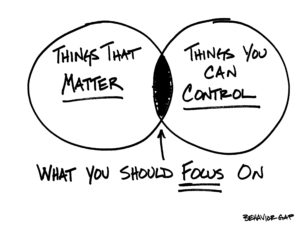Approaches to Financial Planning: Finding Your Perfect Strategy
Approaches to financial planning: Explore DIY, hybrid, and professional strategies to set goals, manage cash flow, invest smartly, and secure your financial future.
Key Takeaways
- There are multiple approaches to financial planning, from DIY methods using apps and calculators to working with certified financial planners who provide comprehensive guidance
- The goal-based approach focuses on specific objectives like retirement or homeownership, while comprehensive planning addresses all financial areas simultaneously for optimal results
- Life-stage planning adapts strategies based on your age and circumstances, recognizing that a 25-year-old’s financial needs differ vastly from a 55-year-old’s priorities
- Technology-assisted planning through robo-advisors and digital platforms offers a middle ground between self-directed and professional guidance at lower costs
- The best approach combines elements from multiple strategies and evolves as your financial situation changes over time
Totally get it—picking a financial planning approach can feel like staring at a massive menu when you’re already starving. Everything sounds good, nothing sounds right, and you just want someone to point at the best option.
Your financial life is uniquely yours. A recent college grad managing student loans needs a completely different game plan than a mid-career professional balancing a mortgage, kids’ college funds, and retirement savings. The sweet spot is finding an approach that fits where you are right now—your actual situation, how you like to learn, and what you’re working toward.
Research from the CFP Board shows something interesting: people who work with comprehensive financial planners report 30% higher satisfaction with their long-term outcomes compared to those piecing things together on their own. That said, comprehensive planning isn’t always the right move—sometimes a more focused, targeted approach makes better sense for your budget and current needs. But that doesn’t mean comprehensive planning is right for everyone – sometimes a targeted approach makes more sense for your budget and needs.
Let’s break down the different approaches to financial planning so you can figure out which one (or combination) works best for your financial life.

The DIY vs. Professional Guidance Spectrum
Think of financial planning guidance as a spectrum rather than an either-or choice. On one end, you’ve got complete DIY control, and on the other, you’ve got full-service wealth management. Most people land somewhere in the middle.
Self-Directed Planning
This approach puts you in the driver’s seat using budgeting apps like Mint, YNAB (You Need A Budget), or Personal Capital. You’re tracking your monthly cash flow, setting up your own investment accounts, and making all the decisions. It’s like being your own financial advisor – which can be both empowering and terrifying.
The beauty of self-directed planning is control and cost. You’re not paying advisory fees, and you know exactly where every dollar goes. The downside? You’re responsible for everything, including mistakes that could cost you thousands in tax inefficiency or poor investment choices.
Hybrid Approach
This middle ground combines personal research with occasional professional consultations. Maybe you handle day-to-day budgeting and simple investing, but you bring in a fee-only financial planner for major decisions like retirement planning or tax planning strategies.
Many advisors offer project-based services where you pay $1,500-$3,000 for a comprehensive financial plan, then implement it yourself. It’s like getting architectural plans for your financial house, then doing the construction yourself.
Fee-Only Financial Planners
These folks either charge by the hour (usually $150–$400) or a flat fee for a specific project. The key difference? They don’t sell financial products. So when they suggest something, it’s because it’s actually good for you—not because there’s a commission waiting on the other side.
Fee-only planners are great options when you want to be certain that someone is taking care of you finances properly and making sure your will and beneficiaries are set. They’re clutch when life gets complicated—think multiple income streams, bigger portfolios, equity comp, rental properties, or tax stuff that makes your eyes glaze over. That’s when having someone truly on your side (with no sales agenda) can save you money, stress, and a lot of second-guessing.
Full-Service Wealth Management
This is the concierge service of financial planning. Wealth managers typically work with high-net-worth individuals (usually $1 million+ in assets) and handle everything – investments, tax planning, estate planning, even coordinating with your accountant and attorney.
The cost is significant (usually 1-2% of assets annually), but for busy professionals with complex financial lives, it can be worth every penny. They’re handling your financial life so you can focus on earning and enjoying your money.
| Approach | Cost | Time Investment | Best For | Drawbacks |
|---|---|---|---|---|
| DIY | Low (app fees) | High | Simple situations, learning-oriented people | Potential for costly mistakes |
| Hybrid | Moderate | Moderate | Growing complexity, specific needs | Coordination challenges |
| Fee-Only | Project-based | Low ongoing | Complex situations, one-time planning | Implementation falls on you |
| Full-Service | High (1-2% assets) | Very low | High net worth, busy professionals | Expensive, less control |
Goal-Based Financial Planning
Instead of trying to optimize everything at once, goal-based planning focuses on specific financial objectives with clear timelines and dollar amounts. It’s like training for different races – your 5K strategy looks nothing like your marathon plan.
This approach recognizes that not all money goals are created equal. Your emergency fund needs to be accessible and safe, while your retirement savings can handle more risk since you won’t need that money for decades.
Setting Up Goal-Specific Buckets
Start by identifying your major financial dreams and needs. Maybe it’s buying a house in three years, funding your daughter’s college in 10 years, or achieving financial independence in 20 years. Each goal gets its own “bucket” with a specific savings strategy.
For short-term goals (under 3 years), you’ll want conservative approaches like high-yield savings accounts or money market accounts. Medium-term goals (3-10 years) might use balanced investment portfolios, while longer term objectives can handle more aggressive growth strategies.
Risk Tolerance by Timeline
Here’s where goal-based planning gets smart – your risk tolerance isn’t a fixed personality trait, it’s based on when you need the money. That house down payment fund should be in boring, stable accounts because you can’t afford to lose 20% right before you’re ready to buy.
But that retirement money you won’t touch for 30 years? That can ride the stock market rollercoaster because it has time to recover from temporary dips. This approach prevents you from being either too conservative (missing growth opportunities) or too aggressive (risking money you need soon).
Account Selection Strategy
Goal-based planning makes choosing financial accounts much easier. College savings automatically points to 529 plans with their tax advantages. Retirement goals direct you toward 401(k)s and IRAs. Emergency funds belong in savings accounts where you can access them quickly.
This targeted approach also helps with maintaining tax efficiency. You’re not randomly stuffing money into investment accounts – you’re strategically using the right account types for each goal’s timeline and tax situation.

Life-Stage Planning Approach
Your twenties financial plan should look nothing like your fifties plan, and that’s perfectly normal. Life-stage planning recognizes that your financial priorities, risk capacity, and available resources change dramatically as you age.
Young Professionals (20s-30s)
If you’re in this stage, your financial plan probably feels like playing financial whack-a-mole. Student loans pop up, then credit card debt, then you realize you should probably start that emergency fund everyone talks about.
The good news? Time is your secret weapon. Even small amounts invested now can grow substantially thanks to compound interest. Your investment plan can be aggressive because you have decades to ride out market volatility.
Priority order for young professionals: knock out high interest debt first (anything over 6-7%), build a starter emergency fund ($1,000-$2,500), then start investing for retirement while building your full emergency fund. Don’t try to do everything perfectly – just start somewhere and build momentum.
Mid-Career Individuals (30s-40s)
Welcome to peak financial complexity. You’re probably juggling mortgage payments, maybe some child-related expenses, trying to catch up on retirement savings, and possibly helping aging parents. It’s like financial Jenga – everything’s connected.
This is often when people benefit most from professional guidance because there are so many moving pieces. You might be dealing with complex tax situations, evaluating different insurance needs, and trying to balance multiple competing financial goals.
The key during this stage is avoiding lifestyle inflation that prevents wealth building. Just because you can afford a bigger house or fancier car doesn’t mean you should if it derails your long-term financial security.
Pre-Retirees (50s-60s)
Now you’re in the red zone – close enough to retirement that you need to start getting serious about income planning. This is when your investment strategy begins shifting from pure growth to balancing growth with income generation.
Take advantage of catch-up contributions if you’re behind on retirement savings. People over 50 can contribute an extra $7,500 to 401(k)s and $1,000 to IRAs annually. It’s like getting free money from the tax code.
Start thinking about the withdrawal phase. How will you actually get money out of your retirement accounts? What’s your plan for healthcare costs? When will you claim Social Security for maximum benefits? These decisions can make or break your retirement income.
Retirees
Congrats—you made it to the spending phase of retirement! Seriously, take a breath and enjoy that win. But here’s the real talk: the planning doesn’t stop now. You might have 20–30 more years ahead, which means your money still has to work while you’re using it.
Your focus shifts from “How do I grow this?” to “How do I pay myself reliably without running out?”
Comprehensive vs. Targeted Planning
Think of this choice like home improvement. Sometimes you need to renovate the entire house (comprehensive), and sometimes you just need to fix the leaky faucet (targeted). Both approaches have their place depending on your situation.
Comprehensive Financial Planning
This holistic approach looks at your entire financial life as an interconnected system. Instead of optimizing pieces in isolation, comprehensive planning ensures all parts work together harmoniously.
A comprehensive financial plan typically addresses cash flow management, investment planning, tax planning, insurance analysis, retirement planning, and estate planning all at once. It’s like having a master blueprint for your financial future.
The CFP Board research shows clients using comprehensive planning report 30% higher satisfaction with their financial outcomes. That’s because comprehensive planning catches blind spots and optimizes the interactions between different financial strategies.
For example, a comprehensive plan might discover that your current investment allocation creates tax inefficiencies, or that your insurance coverage has gaps that could derail other financial goals. These connections are easy to miss when you’re handling pieces separately.
Targeted Planning Approaches
Sometimes you don’t need to renovate the whole house – you just need to fix specific problems. Targeted planning is about fixing one money issue at a time instead of trying to overhaul your entire financial life all at once.
Maybe everything’s fine except your debt is stressing you out. Or you’re solid with day-to-day budgeting but clueless about how to catch up for retirement. Zeroing in on that one area can be cheaper, faster, and way less overwhelming.
It’s a great approach when you’re just getting started and want quick wins:
- First, knock out high-interest credit card debt.
- Next, build an emergency fund so surprise expenses don’t wreck you.
- Then, start investing and growing your money.
One step, one win, then the next. That’s how momentum (and confidence) builds. It’s less complex and easier to maintain momentum.
When Each Approach Makes Sense
Choose comprehensive planning when you have multiple financial goals competing for resources, complex tax situations, significant assets, or you’re approaching major life transitions like retirement. The coordination benefits usually justify the higher cost and complexity.
Targeted planning works better when you have specific financial challenges, limited budgets for professional help, or you’re just getting started and want to build confidence by mastering one area at a time.

Technology-Assisted Planning Methods
Technology has democratized financial planning in ways that would have seemed impossible just a decade ago. You can now access sophisticated planning tools and investment strategies that were once reserved for wealthy clients of major financial firms.
Robo-Advisors
Companies like Betterment, Wealthfront, and Schwab Intelligent Portfolios use algorithms to create and manage diversified investment portfolios based on your goals and risk tolerance. It’s like having a financial advisor that never sleeps and charges much lower fees.
Most robo-advisors charge 0.25-0.50% annually compared to 1-2% for traditional financial advisors. They automatically rebalance your portfolio, harvest tax losses, and adjust your asset allocation as you age. For straightforward investment goals, they’re hard to beat on cost and convenience.
The limitation is that robo-advisors focus primarily on investment management. They won’t help with comprehensive financial planning, complex tax strategies, or life insurance needs. Think of them as excellent at one thing rather than jacks-of-all-trades.
Financial Planning Software and Apps
Tools like Personal Capital provide detailed net worth tracking and investment analysis. YNAB excels at budgeting and cash flow management. Retirement-specific calculators help you figure out if you’re on track for your target retirement date.
These tools often provide surprisingly sophisticated analysis. Personal Capital’s retirement planner runs Monte Carlo simulations to stress-test your retirement plan against different market scenarios. That’s institutional-level analysis available for free.
The challenge with DIY software is interpretation. The tools can tell you what the numbers say, but they can’t provide context about whether the assumptions make sense for your situation or help you prioritize competing financial goals.
Virtual Financial Advisor Platforms
Services like Facet Wealth and Zoe Financial offer virtual access to human financial planners at lower costs than traditional brick-and-mortar firms. You get professional guidance without paying for expensive office overhead.
These platforms typically charge 0.50-1.00% of assets or flat monthly fees ($100-$500), making professional advice accessible to people who don’t have the $1 million+ typically required for traditional wealth management.
The trade-off is usually less face-to-face interaction and potentially less comprehensive service than you’d get from a local financial planner who knows your entire situation intimately.
Hybrid Technology Solutions
Many traditional financial advisors now use technology to enhance their services rather than replace human judgment. They might use robo-platforms for portfolio management while providing human guidance for complex planning decisions.
This approach can offer the best of both worlds – technology efficiency for routine tasks and human expertise for nuanced decisions. Your investment accounts get optimized automatically while your financial planner focuses on higher-value activities like tax planning and estate planning strategies.
Risk-Based Planning Strategies
Your relationship with risk shouldn’t be based on your personality alone – it should align with your financial goals, timeline, and life circumstances. A risk-based approach matches your investment strategy to your actual capacity for risk, not just your comfort level.
Conservative Approach
Conservative planning prioritizes capital preservation over growth. This doesn’t mean you’re being wimpy with your money – sometimes conservative is exactly the right strategy.
If you’re nearing retirement, have significant health concerns, or need money within the next few years, conservative approaches make perfect sense. High-yield savings accounts, CDs, government bonds, and stable value funds all serve important roles in financial planning.
The key is being conservative for the right reasons. If you’re 25 years old and putting everything in savings accounts because you’re scared of market volatility, you’re probably being too conservative for your own good. Time horizon matters more than comfort level when choosing your risk strategy.
Moderate Approach
This balanced strategy typically involves diversified portfolios mixing stocks and bonds in ratios like 60/40 or 70/30. It’s designed to provide growth while cushioning against major market downturns.
Moderate approaches work well for people with medium-term goals (5-15 years) or those who want steady progress without extreme volatility. You’ll typically see more consistent returns than aggressive strategies, but you’ll also miss some of the highest growth periods.
Target-date funds often follow moderate approaches, automatically adjusting the risk level as you get closer to your goal date. They start aggressive when you’re young and gradually become more conservative as you approach retirement.
Aggressive Approach
Aggressive strategies focus on maximum growth through higher allocations to stocks, growth-oriented mutual funds, and sometimes alternative investments. This approach accepts higher volatility in exchange for higher potential returns.
If you’re young, have stable income, and won’t need your investment money for decades, aggressive approaches often make mathematical sense. The S&P 500 has averaged about 10% annual returns over long periods, despite significant short-term volatility.
The challenge with aggressive investing is psychological, not mathematical. Can you really stick with your plan when your portfolio drops 30% in a bad year? Many people think they can handle aggressive strategies until they experience a real market crash.
Dynamic Risk Adjustment
Smart risk management means adjusting your approach based on changing circumstances. Maybe you start aggressive in your twenties, shift to moderate as you approach major goals, then become more conservative as you near retirement.
Life events should trigger risk reviews. New job with stable income might support more aggressive investing. Health scares might call for more conservative approaches. Inheritance might change your entire risk capacity.
The goal isn’t to time the market, but to ensure your risk level matches your current situation rather than the situation you had when you first set up your investment plan.

Values-Based and Socially Responsible Planning
Your money doesn’t have to check its values at the door. Values-based financial planning integrates your personal beliefs and social priorities into your financial strategy, proving you don’t have to choose between doing good and doing well financially.
ESG Investing
Environmental, Social, and Governance (ESG) investing screens companies based on sustainability practices, social responsibility, and corporate governance standards. It’s like voting with your investment dollars for the kind of world you want to see.
ESG funds have exploded in popularity, with options spanning everything from broad market indexes to specific themes like clean energy or gender equality. The performance debate has largely been settled – many ESG funds perform as well as or better than traditional funds while aligning with investor values.
The challenge is separating authentic ESG practices from marketing-driven “greenwashing.” Look beyond fund names and marketing materials to examine actual holdings and screening methodologies. Some “sustainable” funds still hold companies that don’t align with most people’s values.
Faith-Based Financial Planning
Religious principles can provide powerful frameworks for financial decisions. Whether it’s Islamic finance principles that avoid interest, Christian stewardship concepts that emphasize generosity and debt avoidance, or other faith traditions, incorporating religious values often leads to more disciplined financial habits.
Faith-based planning might influence everything from debt management (some traditions discourage debt) to investment choices (avoiding companies that conflict with religious values) to charitable giving strategies that maximize both impact and tax benefits.
Many financial advisors specialize in faith-based planning, understanding both the technical aspects of financial management and the religious principles that guide their clients’ decisions.
Impact Investing
Impact investing goes beyond avoiding “bad” companies to actively seeking investments that generate positive social or environmental outcomes alongside financial returns. It’s like being a venture capitalist for positive change.
Options range from community development financial institutions (CDFIs) that lend to underserved communities to social impact bonds that fund social programs. Microfinance, affordable housing projects, and renewable energy infrastructure all offer impact investing opportunities.
The key is measuring both financial and social returns. Impact investing shouldn’t mean accepting poor financial performance – the best impact investments deliver competitive returns while creating positive change.
Community-Focused Approaches
Credit unions, community banks, and local investment opportunities can align your financial strategy with community development. Your banking and investing dollars stay local, supporting businesses and jobs in your area.
Community-focused approaches often offer personal benefits too – better customer service, lower fees, and products designed for local needs rather than maximizing corporate profits. It’s enlightened self-interest that also supports your community.
Consider local opportunities like community-supported agriculture (CSA) shares, local business investments, or regional development funds. These might not replace your entire financial strategy, but they can be meaningful components of a values-based approach.
Choosing the Right Approach for Your Situation
After exploring all these approaches to financial planning, you might feel like you’re back where you started – overwhelmed by options. Here’s a framework for cutting through the confusion and finding your best starting point.
Assess Your Financial Complexity
Start with an honest assessment of your financial situation. Do you have multiple income sources, own rental properties, have complex tax situations, or manage family trusts? High complexity usually calls for comprehensive planning or professional guidance.
If your financial life is relatively straightforward – single income, basic investment accounts, standard tax situation – you might do well with targeted approaches or technology-assisted planning. Don’t pay for complexity you don’t need.
Consider your learning style too. Some people love diving deep into financial education and enjoy managing the details. Others prefer to delegate financial decisions to focus on other priorities. Neither approach is wrong – they just call for different planning strategies.
Evaluate Your Time and Interest
DIY approaches require significant time investment, not just for initial setup but for ongoing management and education. If you enjoy learning about investing and have time for regular portfolio maintenance, self-directed planning can be rewarding and cost-effective.
If you’re a busy professional who’d rather spend free time with family or pursuing hobbies, paying for professional guidance often makes sense. Your time has value – sometimes it’s worth paying for expertise so you can focus on your strengths.
Consider Costs vs. Benefits
Financial planning costs should be evaluated as an investment, not just an expense. A good financial planner who helps you avoid costly mistakes, optimize your tax strategy, and stay disciplined during market volatility can pay for themselves many times over.
But don’t assume expensive always means better. A simple situation handled by expensive professionals is wasteful, just like a complex situation managed by inappropriate tools can be costly in missed opportunities.
Start Somewhere and Evolve
Here’s the most important point: any approach to financial planning is better than no approach. Don’t let perfect be the enemy of good enough to get started.
Many successful people start with simple budgeting apps and basic investment accounts, then gradually add complexity as their financial situation grows. You might begin with a robo-advisor for investing and a budgeting app for cash flow, then add professional guidance for specific needs like tax planning or estate planning.
Your financial planning approach should evolve as your life evolves. A dynamic process that adapts to changing circumstances serves you better than a static plan that becomes obsolete.
Decision Framework
Here’s a simple decision tree to help you choose your starting approach:
- Simple situation + DIY personality + plenty of time = Start with self-directed approach using apps and online tools
- Growing complexity + moderate budget = Hybrid approach with occasional professional consultation
- Complex situation + busy lifestyle = Fee-only financial planner or comprehensive planning
- High net worth + desire for full delegation = Full-service wealth management
Remember, you can always change approaches as your needs evolve. The goal is to match your current situation with an appropriate level of planning sophistication and professional support.

Frequently Asked Questions
How much money do I need to work with a financial planner?
Many fee-only planners work with clients who have as little as $50,000 in assets or even less for specific project-based planning. Some planners charge hourly rates ($150-$400) for consultations regardless of your asset level. Online planning services and robo-advisors often have no minimum investment requirements. The key is finding a financial professional whose service model matches your current financial situation and needs, not waiting until you think you have “enough” money to get started.
Can I switch between different planning approaches?
Absolutely – your planning approach should evolve as your financial situation becomes more complex. Many people start with DIY methods and transition to professional help as their income and assets grow. You might use different approaches for different goals, like DIY budgeting but professional investment management. The important thing is regularly reviewing whether your current approach still fits your needs and making adjustments as your life evolves.
What’s the biggest mistake people make when choosing a planning approach?
The biggest mistake is trying to do everything themselves when their situation has become too complex for their knowledge level, which can lead to costly errors in tax planning or investment decisions. Conversely, paying for expensive professional services when simple online tools would suffice wastes money that could be invested. The other major mistake is not starting at all because they’re overwhelmed by the options – any approach is better than no approach to financial planning.
How often should I review and potentially change my planning approach?
Review your approach annually or after major life events like marriage, divorce, job changes, inheritance, or health issues. Your planning needs typically become more complex as your income increases and you approach retirement. Technology improvements and new planning tools might also offer better solutions than your current approach. The key is staying flexible and adjusting your strategy when your financial situation or life circumstances change significantly.
Is it worth combining multiple approaches to financial planning?
Yes, many successful planners use hybrid approaches like DIY budgeting with professional investment advice or robo-advisors for core holdings while working with a planner for complex tax strategies. You might handle daily money management yourself while getting professional help for major financial decisions like retirement planning or estate planning. The key is ensuring your different approaches work together rather than creating conflicting strategies, and that the combined cost doesn’t exceed the benefits of the integrated approach.








2 Comments
Comments are closed.